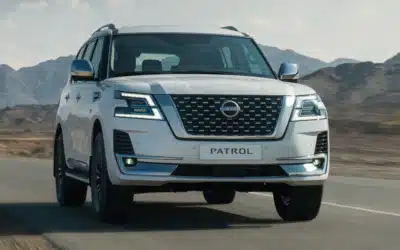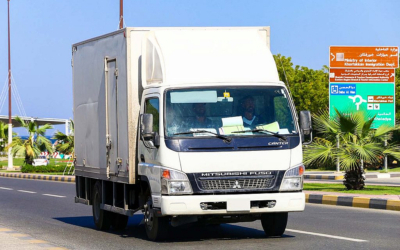Keeping drivers safe, protecting assets and delivering on time are the fundamentals of a successful delivery operation. As a fleet manager you juggle compliance, customer expectations and tight margins every day. This guide walks through the practical safety protocols you should enforce now to reduce incidents, protect your people and safeguard your bottom line. Expect actionable steps, technology touch-points and governance tips you can implement this week.
Why Safety Protocols Matter for Delivery Fleets
Operational and financial impacts
Accidents and breakdowns do more than pause a single shift. They create ripple effects: missed deliveries, higher insurance premiums and downtime that erodes customer trust. A single avoidable incident can cost tens of thousands in repairs, legal fees and lost business. By treating safety as an operational KPI you preserve revenue and reduce the volatility of running a delivery fleet.
Regulatory and reputational considerations
Regulators are tightening rules on driver hours, vehicle standards and on-road behaviour. Non-compliance can mean heavy fines and suspensions. Beyond that, negative incidents spread fast on social media and review platforms. Protecting your brand means meeting legal requirements and proactively managing risk to avoid reputational damage.
Goals of an effective safety programme
Set measurable objectives: lower incident rates, reduce claims costs and improve on-time delivery performance. Use clear metrics like incidents per 100,000 km, average days between failures and percent of drivers completing refresher training. When goals are specific, you can target investment in training, telematics and vehicle fit-out for the best returns.
Leadership, Policy and Governance
Safety leadership and culture
Safety starts at the top. When senior leaders visibly prioritise safety, it filters down. Hold quarterly safety reviews, celebrate hazard reports and publicly recognise safe driving. Small actions, like leaders riding with drivers on routes, send a powerful message that safety is non-negotiable.
Clear written policies and SOPs
Drivers need simple, accessible Standard Operating Procedures. Cover topics such as speed limits, distracted driving, cargo securement and vehicle pre-checks. Keep documents short, version-controlled and available on mobile devices so drivers can consult them on the go. Regularly update SOPs to reflect regulatory changes and lessons from incidents.
Roles, responsibilities and accountability
Define who does what. Fleet managers, dispatchers and supervisors must have documented responsibilities and target KPIs. Use a mix of positive incentives and clear corrective actions. When everyone knows the rules and consequences, enforcement becomes fair and consistent.
Driver Screening, Training and Behaviour Management
Hiring and screening best practices
Start with robust hiring. Check driving records, conduct background checks and include practical driving assessments. Consider behavioural interviews that probe how candidates respond to stressful road situations. Better upfront screening reduces the chance of high-risk hires joining your fleet.
Ongoing training and coaching
Training is continuous. Deliver a blend of e-learning, classroom refreshers and in-vehicle coaching. Focus on defensive driving, fatigue management and customer-facing behaviours. Short microlearning modules work particularly well for drivers on tight schedules; they improve retention and are easy to slot into shifts.
Monitoring, incentives and corrective action
Use telematics to monitor speeding, harsh braking and idling. Combine data with human coaching rather than relying on punitive measures alone. Reward safe behaviour with spot bonuses or recognition. When corrective action is necessary, follow a clear, documented progressive process so drivers understand improvement expectations.
Ready to see how real-time telematics and coaching tools reduce incidents? Book a demo with Traknova to walk through live dashboards, driver scoring and automated alerts that save time and protect your fleet. Book demo
Vehicle Maintenance, Equipment and Technology
Preventive maintenance programmes
Preventive maintenance is non-negotiable. Scheduled inspections, oil and brake checks and tyre management catch faults before they cause accidents or roadside breakdowns. Use digital checklists and maintenance reminders to ensure tasks aren’t forgotten. For ideas on structuring maintenance cycles, see our piece on Preventive Maintenance for Taxi Fleets — many principles transfer directly to delivery fleets.
Safety equipment and vehicle fit-out
Equip vehicles with the essential safety kit: first-aid, fire extinguishers, secure cargo restraints and adequate lighting. Consider physical fit-outs such as partitioning and anti-slip flooring for vans. When choosing equipment, prioritise items that reduce risk at delivery sites, like portable cones and high-visibility vests.
Telematics and driver-assist tech
Invest in telematics for live Tracking and incident alerts. Collision detection, lane departure alerts and forward-collision warnings help prevent crashes. Pair technology with policies that require immediate review of flagged events so coaching happens while memories are fresh. For guidance on dash cam placement, check our Best Dash Cam Mounting Positions for Fleet Managers, and consider adding Dash Cameras to your fit-out.
Operational Protocols, Route Planning and Incident Management
Safe route planning and workload management
Optimise routes not just for speed but for safety. Avoid high-risk zones at night, schedule realistic ETAs and ensure drivers have adequate rest between shifts. Use route planning that considers parking difficulty and loading access to reduce risky manoeuvres at customer sites.
Delivery-site safety and customer interactions
Standardise drop-off procedures. Require drivers to park in safe positions, use hazard lights and, where appropriate, request assistance from customers for heavy items. For contactless deliveries, establish protocols for leaving items safely and photographing drop locations to reduce disputes and confrontations.
Incident reporting, investigation and continuous improvement
Make reporting easy and non-punitive. Use a simple app-based form for drivers to submit incidents and near-misses. Conduct root-cause analysis quickly, share findings with the team and update SOPs. Over time, trends from reports will show where training, equipment or route changes will have the biggest impact.
Conclusion
Safety is an ongoing programme, not a one-time project. By combining strong leadership, clear policies, rigorous driver management, preventive maintenance and modern telematics you build a resilient delivery operation. Small changes compound: fewer incidents mean lower costs, happier customers and a stronger reputation.
Frequently Asked Questions
How quickly will telematics show value?
Most fleets see measurable improvements in driver behaviour within 30 to 90 days once alerts are acted upon and coaching is consistent. Savings from reduced idling, fewer incidents and better routing compound over the first year.
What is the best way to discourage distracted driving?
Combine technology and culture. Enforce mobile-phone policies, use vehicle settings to limit notifications and monitor events with telematics. Reinforce rules through training and reward drivers who maintain clean driving records.
How often should drivers receive refresher training?
At minimum annually, but after any significant incident, policy change or flagged telematics event. Short, frequent refreshers are often more effective than long, infrequent sessions.
Can dash cams be used for coaching rather than discipline?
Yes. Configure dash cam review policies to prioritise coaching. Use footage to show examples of safe and unsafe behaviour and to validate incident reports. Clear communication builds trust and improves uptake.
Who should I contact to get started with fleet safety tech?
Book a demo with Traknova to explore solutions tailored to delivery operations. If you prefer direct help, Contact us and our team will guide the next steps.
Want to talk next steps? Book a demo or consultation with Traknova today to see how our platform brings together telematics, driver coaching and compliance tools into one easy dashboard. Book demo
Thanks for reading. I’d love your feedback — what safety challenge keeps you up at night? Share this article with a colleague if you found it useful and leave a comment below so we can cover the topics that matter most to your fleet.









